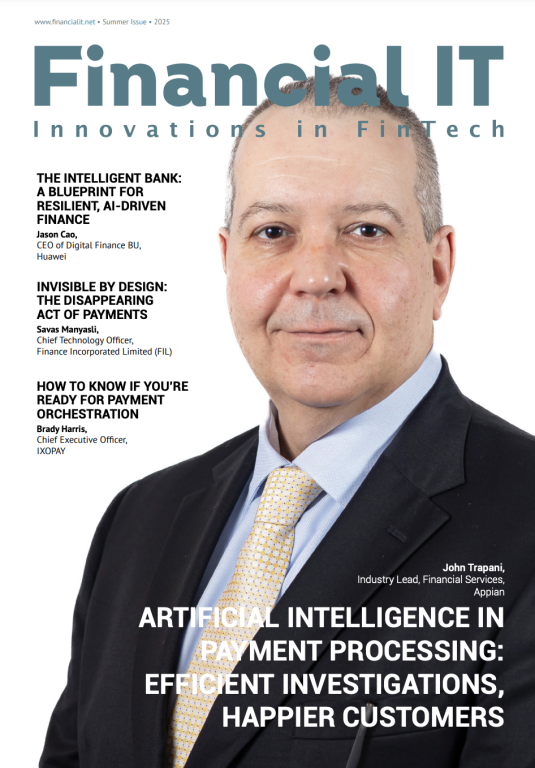What Trends Will Dominate The B2B Payments World In 2025?

- Pat Bermingham, CEO at Adflex
- 11.02.2025 04:00 pm #B2BPayments #PaymentsTrends
The beginning of the end for Direct Debits and Card on File?
In mid-2025, expect to see the first implementations of commercial Variable Recurring Payments (cVRPs) in the UK, beginning with regulated industries that already have strong consumer protections, such as payments to utility companies, governments and charities.
Until now, VRPs have largely been limited to moving money between customers’ own accounts. 2025 will see the rollout of variable recurring payments to third parties, in what is seen as a precursor to wider rollouts in online commerce next year.
Enabling flexible, automated payments between bank accounts offers significant convenience and efficiency for both buyers and suppliers: either party will be able to initiate the transaction. This is a key reason why we could soon see VRPs replace Direct Debit – and even card-on-file – payments in the B2B world, providing faster settlement and lowering the risk of fraud, while making repeat purchases frictionless and simple.
Virtual card growth will be driven by value, not security
Virtual card transactions will exceed 121 billion globally by 2027, according to Juniper Research. This is a 340% increase from 28 billion in 2022. Businesses choose them for their convenience, controls and security: they can be generated for a specific purpose, such as a one-time transaction, allocated to a specific employee or department, or assigned a limited budget or time period for use.
But in 2025, more businesses will recognise there is significant untapped value in the embedded data features that virtual cards offer. First and most importantly, virtual cards allow instant ownership of transaction data without needing to pass it to the settlement side. This real-time access empowers businesses to streamline spend management, enhance cash flow monitoring, and improve reconciliation processes.
Virtual cards enable more granular insights by capturing metadata such as merchant details, location, and purpose of spend, which can be directly linked to specific projects or budgets. This precision reduces administrative overhead and drives better financial decision-making.
Organisations can also leverage the data capabilities of virtual cards to automate reporting, optimise supplier relationships, and identify trends that might otherwise remain hidden in traditional payment methods. These advantages make virtual cards an indispensable tool for businesses seeking to unlock new efficiencies and maintain a competitive edge in 2025, particularly as AI technologies increasingly do the heavy lifting when it comes to data analysis.
The return of slower payments?
Although the industry is racing toward faster, automated payments, it is not always right for every business or every buyer-seller relationship. We must acknowledge that in some cases, faster payments can sometimes come with the risk of faster fraud. Fast payment systems are attractive because they provide quicker access to funds. However, this applies to criminal entities as much as it does to legitimate businesses. An unintended consequence of faster payments can be faster – unchecked – fraud.
Shorter payment processing times inherent in faster payments systems can limit the ability to perform robust fraud checks that help protect against money laundering or terrorist financing. Fraudsters are exploiting convenient yet vulnerable attributes like 24/7 availability and high transaction limits, to initiate unauthorised transactions. Increasingly, these are perpetrated using social engineering techniques that manipulate victims into transferring funds quickly and irreversibly.
So, might we see the return of ‘slower’ payments in 2025? Businesses should ask themselves if they need the fastest payments possible, or if they want stronger security measures. In many cases, it is more important to businesses that payments are verified and authenticated rather than being ‘instant’.
Ticking all the boxes: Network tokenisation
Network tokenisation revenue in 2025 will be worth $4.1bn, according to Juniper Research. The company also forecasts growth of 117% by 2029, with total network tokenisation revenue expected to hit $8.9bn. It’s not hard to see why.
Tokenised transactions reduce friction and enhance security by replacing sensitive payment details with ‘tokens’ that cannot easily be reverse engineered to reveal useful data. They are also reuseable for transactions with the same merchant, removing the need to repeatedly enter payment details, even if a specific card expires or the buyer completes purchases from different devices.
Such convenience is integral to repeat business with preferred suppliers, and in 2025 we expect to see more businesses using network tokens, facilitated by payment solutions like Click to Pay that make it easy and simple for buyers and suppliers.
It is clear that convenience and speed are currently being prioritised in the innovation of B2B payments, but as mentioned, this can’t come at the detriment of security. Network tokens have the potential to tick the speed, convenience and security boxes.
Embedded finance
Businesses across industries have been shifting to digital payments and there are growing expectations that B2B payment experiences should match the convenience and efficiency of the consumer world.
In part, this will be enabled by more advanced embedded finance options in 2025, streamlining workflows and integrating financial services directly into business platforms with APIs, supported by AI technologies capable of enhancing automations and personalisation.
A key part of this will be enabling buyers to offer a payment to a supplier, who can then choose when they want to receive it. If a supplier wants payment immediately, they pay a premium; if there is less urgency, they get a discounted rate. The benefits of this embedded payment functionality are stronger buyer-supplier relationships enabled by more personalised, flexible rates, and the ability for non-urgent payments to undergo enhanced security checks, further reducing risk.





















